#because pigeons are diseased rats and need to all die
Text
So, the Universe decided that another curve ball would be appropriate on top of everything else that's going so freaking well!
I was leaving for work today when I almost stepped on a pigeon that clearly couldn't fly. He was dragging his wing and was obviously in pain, but the thing is we only have one bird rehab center in our entire city (perhaps even the country) and they absolutely don't take in sick pigeons. I contacted them anyway, hoping against hope, but of course they said no... Because why would anything go right and be simple?
However they gave me a list of vet clinics that might take in the bird (not for free obviously) and one of them was even open on a Sunday.
Cue a half-hour desperate walking back and forth, doing my best to just walk away and let someone else deal with this as I have more than enough on my plate... Guess how successful I was!
The pigeon is now called Ozzy (Black Sabbath work shirt so yeah), he's in a vet clinic being taken care of (broken ribs) and in a couple of days - if he survives the stress - I'll most likely take him home to get him fully better before I release him...
How's your day going?
#personal potato#pigeon#i love the little buggers#i asked for help homing him offering to cover the expenses#people suggested i snap his neck#because pigeons are diseased rats and need to all die#i humbly suggested people with that mindset need to all die and got banned from a few places#fucking YIKES the TIMES WE LIVE IN!!#anyways hope the little guy makes it#i can't take anymore bad news I swear!
38 notes
·
View notes
Text
Inktober #14: Overgrown
Not sure what I’m doing with 13: Ash yet, so here, have 14. This features a character from the Cold Light universe but not part of that book. He’s a Proxima, like Meg, but instead of becoming a hero or villain with his powers... he does something else.
Max looked over the yard. “Yikes.”
The executor nodded. “It looks like they didn’t do anything to take care of the yard for the past 10 years. When Walter died, the paramedics had to borrow a weed clipper from the wife to get the walkway wide enough that they could get the stretcher through.”
“My God,” Max said. “Is – was there any chance they could have saved his life otherwise?”
“Oh, no, I’m sure there wasn’t,” the executor said. “He was pronounced DOA. But Helen wants to sell the place and move to an assisted living community. Apparently Walter’d been telling her for ten years that he was having things taken care of – either he was doing the chores, or he was having a landscaper come by, or something – and with her being mostly bed-ridden, she took his word for it.”
“That poor woman. She really hasn’t left her house in ten years?”
“Aside from going outside to bring in grocery and package delivery, neither did Walter. We’ve found a few paths he made through the underbrush to get to the gate where they’d leave the packages, but they weren’t big enough to bring the stretcher through.” The executor shook his head. “The best we can figure, either he was a hoarder of garden vegetation, or he had the worst cast of procrastination anyone’s ever seen.” He gave the suburban jungle one last eyeing-over before turning to Max. “What can you do with this?”
“A lot,” Max said, “but too much of that growth is woody for me to just make it all disappear. When green-stem plants die, like flowers and tomatoes, they just collapse to the ground, but woody plants like trees and shrubs and some kinds of vine will still be there when they die… they won’t continue to grow, their roots will shrink and they’ll dry out and be easier to dig out or cut down, but it’s still going to take some work to remove them.” He pulled at a woody vine that had completely swallowed the white picket fence… at least he thought it was probably a white picket fence from the tiny bits of picket that showed through the vines.
“Well, any cost from landscapers coming in and cutting down whatever’s left after you do your job will be more than made up for by what Helen can get from selling the house, and it would cost a lot more to have them cut it all down while it’s alive.”
“Not to mention the rats.” Max looked at the executor. “You did know about the rats, didn’t you?”
“Uh… no. Helen didn’t mention rats.”
“Just for due diligence, she doesn’t have a family of pet possums or a colony of feral cats living on the property, does she?”
“She has two cats, they’re indoor cats and fixed.”
“And they’re not on the property anymore? It’s important that nothing she wants alive should be on the property at the moment.”
“I get that.” The executor’s smile was nervous. Max took a step away from the man, casually, as if he was inspecting the vines, and saw out of the corner of his eye the executor relax slightly. “She’s got her cats with her, I believe.”
“Staying with kids or something?”
“No, a friend’s house. Walter and Helen never had any kids.” The executor snorted. “If they had, I’d be having words with those kids now. Walter was obviously mentally ill or something, and Helen wasn’t physically capable of enforcing him dealing with the yard even if she knew there was a problem, but if they had kids, there would be no excuse for anyone letting their parents live like this.”
“There’s some smallish creatures in the house. Can we confirm she doesn’t have fish, or other terrarium pets she might have left behind?”
“Huh. She did go to her friend’s in a hurry; it’s not like she’s moved out yet. I’ll check.”
While the executor called the widow to confirm whether or not the lives Max was sensing in the house were wanted or not, Max walked along the fence. Most of the life he was going to have to deal with was deep inside, nowhere near the fence. It was a large property, and he wasn’t going to be able to do it by radiating an area of effect, since there were neighbors. He sighed. Dammit, he was going to have to get the hedge clippers himself, or a machete or something, just to get deep enough into the yard to be able to do his job.
“I don’t get paid to be a gardener,” he muttered.
Well, he didn’t get paid to be a plumber either, but there’d been that colony of mutant amphibious mice that he’d had to track through the pipes in that one house. And at least the homeowner was willing to make a clean sweep, none of “don’t touch my prize rosebushes but get everything else”.
Still, he made a mental note to quote the executor a 20% increase in his usual fee.
“Good news,” the executor said. “Nothing in the house is supposed to be alive.” A little nervously, he asked, “How do you know there’s living things in there? Can you tell what they are?”
“I can tell their approximate size, and, vaguely, about how high off the ground they are,” Max said. “What I’m seeing could be consistent with pet fish, or animals in terrariums… or it could be a few colonies of mice living in the walls. There’s also a lot of insect life, all over. Uh. I think maybe you’re gonna want to check for termite damage after I’m done.”
“Wait, there are termites?”
“Some kind of insect living in parts of the wall that I think might be studs,” Max said. “Could be something like powder post beetles if there’s wooden furniture up against the walls.”
“But you can take care of them?”
“Sure can, but I can’t fix the damage they might have done, so get the place inspected thoroughly before you put it on the market. I can certify that I treated the place for you, once I’m done; I’m licensed to certify state-approved no-toxin extermination was performed. There’s bedbugs, too. That’s weird for people who never leave the house.”
“I’ll just… have the mattresses burned.”
“No need, I can deal with those little suckers too, including the eggs. But the mattresses should be thrown out; there’s gonna be tiny little bloodstains all over them. Nothing bio-active, but people looking at it won’t be able to tell it’s been sanitized. Don’t burn them, the chemicals mattresses are made of turn toxic when you set them on fire.”
“Anything else?”
“Major flea infestation. Those poor cats. Let the friend know and get the homeowner have them professionally treated right away.”
“Is that something you could do?”
“Not without making the cats sick. I don’t do parasites on living creatures; I’m an exterminator. I kill stuff. People aren’t a big fan of exposing their pets to things that kill stuff.” It wasn’t impossible; he’d killed skin cancer once, and the person who’d had the melanoma was still alive, but it was delicate work and dangerous and he’d only done it because his friend hadn’t had insurance and he’d been terrified the thing would metastatize before his friend could raise the money for chemo. Also because chemo was probably worse for people overall than one exposure to a pinpoint death touch. Cats were more fragile than people anyway.
“Okay, I’ll let Helen and her friend know. If Helen’s cats infest her friend’s house with fleas, you’d be able to help with that, right?”
“Yep, with all the usual caveats. Get your pets out of the house for the day, that includes any fish, prized houseplants, and if you want me working on your garden you show me every plant you don’t want dead when I’m done, yadda yadda.”
“Sounds good. So when do you want to get started on Walter and Helen’s yard here?”
Max pulled out his phone, did some quick calculations, and presented the executor with the total. “You can give me a check now, or you can call my secretary and give her the credit card number over the phone.”
“We’ll do a check, that’s simplest.” The executor didn’t even blink at the price. Silently Max kicked himself for not raising the price even higher.
“And I’m gonna need those hedge clippers.”
“I figured as much.”
***
Half an hour later the executor was gone, driven off to get lunch or something, far more than a safe distance away. Max could sense as far as a city block, but he had no idea if he could actually drain life that far away, because he’d never tried.
Numerous supervillains had tried to recruit him since he’d discovered his powers around the age of 14, but Max thought that capes were, in general, ridiculous people. Well, the Peace Force were all right, as heroes went, and his doctor was great despite being a supervillain in her spare time, but why the hell would he ever want to work a job where the entire reason he was on board was to threaten to kill people, or actually do it? He still had nightmares about his grandfather’s death, and the man had been in his 60’s, old enough to die of a heart attack even if Max had had nothing to do with it. Max felt bad when he accidentally killed someone’s pet goldfish – which had happened, in the beginning of his career, because idiots heard “get your pets out of the house” and for some reason mentally tacked on “except for your fish, they aren’t really alive.” Why would he ever want to kill anything another person cared about, let alone a person themselves? Hell, the only mammals he was cool with killing were the rats and mice, and that was mainly because they carried disease and ate people’s food. He wouldn’t take on rural assignments, they kept wanting him to dispose of bunny rabbits and gophers. No thanks. And he didn’t do birds. Pigeons were beautiful creatures and geese were shitheads but mostly just because they weren’t scared of humans, and Max respected that.
His extermination business was certified by the state to be wholly organic and no-toxin, which was good for the environment and for the health of the people he helped. From Max’s perspective, he’d taken a power that terrified most people and kind of screamed “supervillain” to anyone who paid attention to capes, and used it to improve the life and health of people and their pets.
He started at the gate, where the paramedics had hacked a pathway to the house wide enough to get the stretcher through. The pathway was partly the actual original walkway, partly ground that had once been occupied by tall pokeweed plants. As Max walked along the path, he cast his awareness out as far as he could see, to the limit of the yard edge or his eyes’ vision, whichever came first. Life everywhere, from the bacteria and the worms in the dirt to the weedy jungle overrunning every square inch of the yard.
They’d have to replace the worms, when he was done. If Max was going to get all the seeds, he’d have to get everything within the top six inches of the soil. He could leave the bacteria alone – they were small enough that they couldn’t be anything else, and soil needed bacteria to rot the things he was going to kill – but worms were, unfortunately, indistinguishable from small plant shoots, and the garden wouldn’t do well once the worms were all dead.
He stood in the middle of the area he’d mentally bounded, and pulled life energy from it.
Most of the plants slumped immediately. The pokeweed, which wasn’t exactly woody but was easily the thickest non-woody stem Max was familiar with, stood up for a while even as its leaves shriveled, but eventually collapsed on itself. The woody vines and the overgrown shrubs lost their leaves, pulling the water out of any extremity they had in a doomed effort to save themselves. Plants interpreted the pulling of their life force as dehydration, probably because they weren’t evolved to experience this kind of death from any other force.
When he was done… there were still woody sticks and vines and leafless shrubbery everywhere, but everything green was gone, slumped to the ground.
With the clippers, he began cutting himself a path through some raspberry plants that had gotten way out of control, moving toward the side of the house. Once he was far in enough that he could see an area of the yard he hadn’t been able to see before, he did the same thing. Set the range, then pull the life.
It was very important to Max that he could physically see the area he was killing. He could sense life, and its approximate size, so things like the time some absolute shithead had left a child playing in the basement weren’t a real danger for him. He’d notice something as large as a child right away, and had, that time. (He couldn’t prove that said shithead had wanted him to kill the kid so they could sue his insurance for wrongful death, but at the very least the act had been neglectful enough that he’d seen the kid taken away and given to a foster family, and he’d testified at the hearing that had terminated the asshole’s custody. The kid had deserved better.) But kittens, puppies, songbirds, other creatures like that… life came in sizes, for him, and he couldn’t tell the difference between a mouse and a hummingbird, aside from the fact that hummingbirds didn’t stay still as often as mice did and were usually found higher than mice (not always, though… mice climbed on things.) So outside, where most living things were just minding their own business and not bothering the humans, he wanted to be able to see what he was killing.
Back out of where he was, head up to the porch, over to its side where he could see the other side of the yard. Set the range, pull the life. He included part of the house itself in his sweep this time, killing infestations of insects and an absurdly high number of rats and mice. What the hell had been wrong with that guy, that he’d let his disabled wife live in this shithole without doing anything to maintain it or keep the pests under control? Max got the concept of procrastination – the dishes in his own sink hadn’t been done for a week, he just kept killing the fruit flies and mold rather than actually washing them because he hadn’t run out of dishes yet – but this was appalling. He really didn’t want to go in the house, and from what he could see through the windows of the piles of clutter everywhere, the house plainly didn’t want him to go in, either. Hopefully he’d be able to get the place fully sterilized without having to enter.
The whole job took two hours. It was easily the longest a yard this size had ever taken him. By the time he was done, he was twitching with restless energy. The life went somewhere when he took it – it went into him. Max was in his thirties, but physically looked and felt like a man barely out of college; he grew facial hair just so people would take him seriously as a business owner. He’d been sick exactly once since he’d developed his power, mainly because he’d been binge drinking a lot at the time, and apparently that suppressed his immune system no matter how much life force he was brimming with. Max used to know a guy whose power allowed him to siphon off the excess life energy, which he used to pay Max for since he could use it to help sick people for cash, but someone had shot the dude last year and Max hadn’t found anyone else with a similar power set yet.
So here was the part where he wound up the job and went to the gym, because he had to do something to get rid of the energy, and neither of the exactly two girlfriends he’d had in his life had been able to keep up with him in bed when he was like this, so he needed other outlets.
As he left the place, Max looked back at the disaster of a yard. It actually looked significantly worse now – instead of green overgrowth covering everything, now it was sparser, but winter-brown and dry, nothing but lifeless shrubs and the tracery of woody vines still twined around everything despite being leafless and dead. But at least now, the landscapers would have an easier time of it; there’d be no difficulty telling the difference between legitimate, desired plants and weeds when all of them were dead, and dead plants were significantly easier to cut or remove.
He pulled out his cell phone as he headed for his car. “Hey there,” he said to the executor’s voice mail. “I finished the job. Go ahead and send the landscapers in before rats move into the vacuum I just left.”
Max really needed to find someone else who could siphon his excess energy, he thought. The money he’d just made was good, but it’d be better if he could do two or three jobs this size in a day without having to have a few hours in the gym to burn it off before draining anything else. Although, on the plus side, at least now he was really, really buff. Too bad that didn’t help much on the dating scene after he told girls about his power, but it wasn’t like he was going to lie.
4 notes
·
View notes
Text
Have Mercy, Mr. Crow!
...is what viewers yelled at their screens when Russel Crowe sang during the 2012 adaptation of Les Misérables.
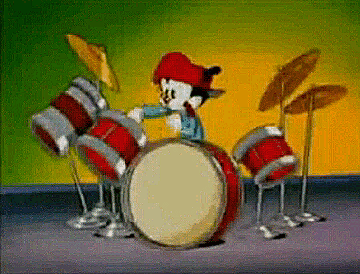
I’ll be here all week, ladies and gentlemen.
And by that I mean: The Merciful Crow by Margaret Owen!

In the Kingdom of Sabor, all Soborian society is structured on a bird-based caste system, with Phoenixes on top, and Crows on the bottom, which seems super unfair considering that crows are really super smart. Ravens and crows are among the smartest birds out there, you guys. Anyway, all the other bird-castes are known for having a birthright, or a particular type of magic about them (you can read all about them here). The Crow caste is the lowest caste because they don’t precisely have their own birthright - their magic is that they can steal magic from other castes, using the bones of the dead. Particularly the teeth.
Though I imagine the whole “teeth as magic” thing might not always work well:

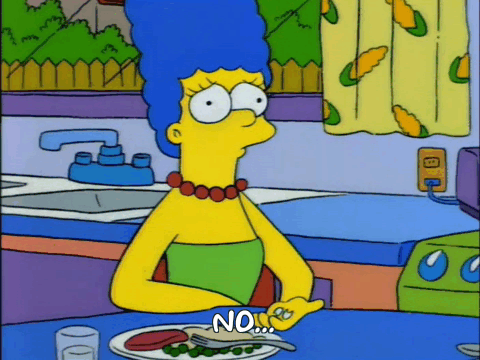
Moving on: the Crow caste is looked down upon by basically everyone in Sabor, and they’re treated like shit all the time. No place will accept them so they’re always on the move. Except for one thing: Crows are immune to a horrible disease known as the “Sinner’s Plague”, a disease that may or may not be smallpox, I’m not certain. It sounds awful, though. The Sinner’s Plague spreads like wildfire, and since the crows can’t catch it, they get to travel all around Sabor answering plague beacons. Whenever someone in a town catches the plague, the Crows come and deliver “mercy” in the form of cutting the throats of the afflicted and then burning their bodies after. This stops the plague from decimating a whole town or village, but sounds terrible for doctors attempting to study the disease or anyone attempting to find a cure or a treatment for it. Or, perhaps, for someone surviving the plague. You don’t get a chance to survive the plague, though, sorry. It’s Crow mercy for you!
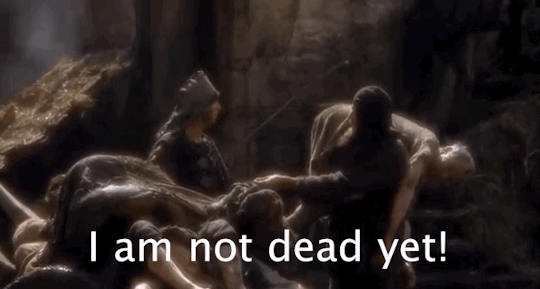
No worries, you’ll be stone dead in a moment.
Fie’s father is the chief of his own Crow band and Fie has been on the road with them her whole life. As a Crow witch, she’s destined to be the chief of her own band someday. When her Crow band answers a plague beacon in Sabor’s capitol city, it turns out the two plague victims to whom they’re meant to give mercy are the crown prince, Jasimir, and his bodyguard, Tavin. Fie doesn’t see her dad give the two boys mercy - the rest of the Crows wait outside while the chief does the job. However, once the crows are well-shot of town, Jasimir and Tavin jump out of their shrouds, very much alive, scaring the hell out of Fie, who promptly punches Tavin in the face. Like so:
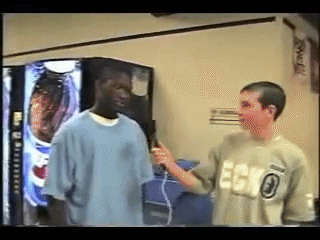
This is why you don’t surprise people like that. It always ends with a punch to the face.
Turns out the Evil Queen, Jasimir’s new stepmom Rhusana has been attempting a takeover of Sabor and she’s been trying to kill off Jasimir for months. Jasimir and Tavin concocted a scheme to fake their deaths so they can escape and flee to their allies, namely, Jasimir’s aunt, Master General Draga. With Draga’s help, Jasimir and Tavin are certain they can stop Rhusana. Getting to her, though, is a problem. Jasimir, a Phoenix and Tavin, a Hawk, are both certain that the Crows will help them, no question because they’re on the superior end of the social scale - plus, Jasimir is the prince. They gotta listen to the prince. The Crows, however, aren’t having it - they’re tired of being treated like shit everywhere they go, and tired of being routinely hunted down and murdered by Sabor’s equivalent of the Klu Klux Klan, the Oleander Gentry. So Fie convinces her dad to swear Jasimir to a magically unbreakable oath: the Crows will help Jasimir get to his allies, and, as King, Jasimir will protect the Crows. Jasimir reluctantly agrees, and he and Tavin are forced to pose as Crows, getting a lovely taste of just how terrible things are for the lowest caste.

Like that, but all the time.
Unfortunately, when the Crows attempt to deliver Jasimir and Tavin to one of Jasimir’s supposed allies, they’re double-crossed - The Crow band, Fie’s kin are captured, but Jasimir, Tavin and Fie manage to escape. The three of them make an odd Crow band, but they have to stick together, answer plague beacons avoid the Oleander Gentry AND Queen Rhusana’s most ruthless trackers if they’re going to make it to Master General Draga alive. Fie just wants to rescue her family - but now she’s stuck with a snobby prince and his handsome bodyguard who will just NOT stop flirting with her. Doesn’t he realize Hawks and Crows don’t go together??
The Merciful Crow is a fun read - once you make sense of the caste system and the tooth-based magic, the story moves quickly. The plot is a familiar one - the exasperated member of an oppressed, impoverished group putting up with clueless rich people who have spent their lives in a bubble - the clueless rich people learning that hey, life isn’t great for everyone and maybe everyone should be treated a little bit better, etc. etc. You’ve probably read it before, but this one comes with some pretty neat worldbuilding. And tooth magic! I wish my teeth could do magic. Alas, they cannot, or else they would’ve straightened themselves out for free, instead of making me pay three thousand dollars for braces...grumble grumble grumble...
Character-wise, Fie is a bit exasperating at first - she’s very high-and-mighty in her attitude towards Jasimir and Tavin, though, to be fair, they’re a couple of rich douchebags with no idea what it’s like to be at the bottom of the ladder. There is going to be some tension, especially since Jasimir is focused on his own problems, rather than those of the Crows. Tavin is stuck in the middle, acting as mediator - keeping his prince alive and their Crow allies happy, all while developing feelings for a certain Crow witch.
Honestly, my biggest complains concerning The Merciful Crow are all bird-related. Mostly, it has to do with the caste level of certain birds. In Saborian society, Doves are considered a superior caste, while pigeons are lower on the social scale. This is odd when you consider that doves and pigeons are literally the same bird. The EXACT SAME bird! Doves are just all-white pigeons. Except pigeons are considered rats with wings, while doves are beautiful symbols of peace. We need to face facts here, people: we’re all bird racists. In German the word for pigeon and dove is the same: die Taube. Because they’re the same goddamn bird.
See this? This is a dove.
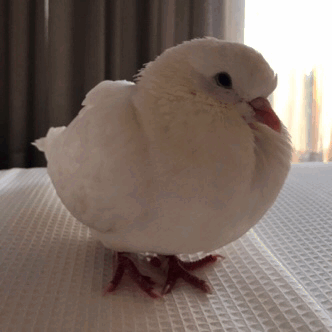
This is a pigeon.
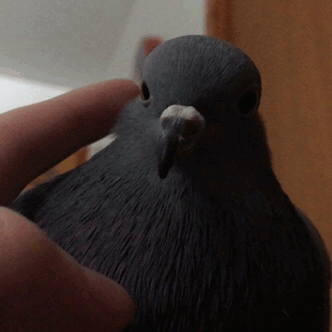
Now, remember: THEY’RE THE SAME BIRD.
A pigeon is a dove and a dove is a pigeon. I mean, yeah, that Prince song wouldn’t work as well if it were called “When Pigeons Cry” and that Henry James novel would be a little weird if it were called The Wings of the Pigeon...but for some reason in the English language we feel we must differentiate between white birds and grey birds, gee I wonder why...
*cough* bird racism *cough*
Damn it, English, you’re already weird as hell, now you have to add bird racism to the equation...
RECOMMENDED FOR: Fans of YA, bored ornithologists, anyone who has ever wished that their teeth could be magic, fans of birds-based caste systems, fans of fun YA adventure/romances with magic. Also, birds.
NOT RECOMMENDED FOR: Serious ornithologists, actual crows, pigeons, doves, non YA fans, people not fond of a writer having fun with a familiar plot line, hawks, swans, or any birds, really. I’m just going to come out and say it: birds shouldn’t be reading YA, it’s too advanced for them, they should stick with picture books and juvenile fiction.
RATING: 4/5
RELEASE DATE: July 30, 2019 (yeah, it was last week, but I promise cromulent reviews, not reviews that are on time).
CROW RATING:
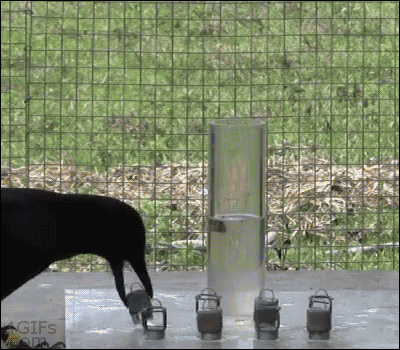
SELECTED GIFS FROM THE SIMPSONS, S13E16, WEEKEND AT BURNSIES:
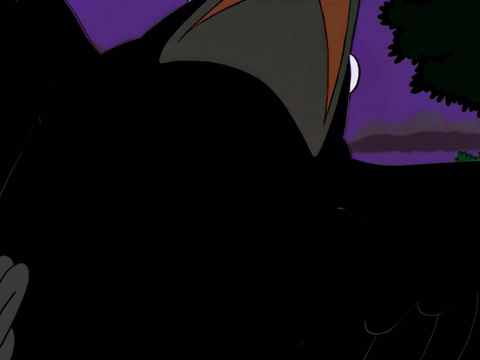
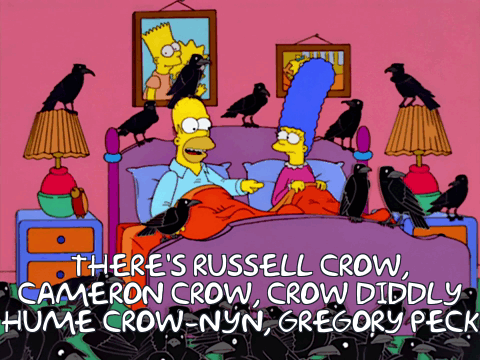

#the merciful crow#margaret owen#young adult fantasy#ya fantasy#book review#crows#bird racism#pigeons#doves#pigeons vs doves#crows are smart#fie#tavin#jasimir#sabor#teeth magic#birds#the simpsons#weekend at burnsies
2 notes
·
View notes
Text
The domestication, rise, and fall of pigeons.
A few corrections have been made, some things have been streamlined, and a bit on the process of genuine domestication has been added. One of my followers on Tumblr once asked me why it was that pigeons in wildlife rehab should be held when other animals should be handled as little as possible. I misunderstood the crap out of her question! And it took three posts to realize I had! Injured or orphaned Wildlife in a rehab center need to be handled as little as possible to avoid imprinting onto humans. They need to be able to survive on their own, and developing the habit of asking humans for hand outs will lead it to becoming malnourished at best and get it killed for being a nuisance at worst. Mammals in particular may be killed on approach as fearless approach of humans by a wild animal is one of the warning signs that it might have rabies, which requires brain tissue to test for. Pigeons are not wild animals. On principal, imprinting avoidance should not apply to them. It actually causes them a lot of harm. Pigeons are intensely social birds! Nestlings suffer from touch starvation as intensely as a human infant and can be mentally stunted or even out right stress to death from lack of interaction. More urgently: We are simply not capable of teaching a domestic pigeon peep to survive in the wild. Pigeons are social and observational learners, with cognition equivalent to a human 5 year old. Like human children, pigeon squeakers are TAUGHT how to be pigeons. Their social structure is VERY human like! Their father takes them out on foraging trips (because mom either has or is getting ready to lay the next clutch) and teaches them where to find food, water, and nest materials. What to eat, where to shelter, and how to interact with other pigeons. How and when to defer to the status of older established flock mates to avoid a fight and how and when to stick up for themselves to make sure they get their fair share of resources. Songbirds and nearly all other columbids (Including domestic Ringneck Doves) kick their kids out as soon as they are self feeding and they either make it or they don’t. Their parents will chase them out if they come back. Feral Pigeons only leave their families if the flock has grown too large for local resources to support. Truthfully, orphaned feral pigeons do not belong in wildlife rehab at all. Pet shelters should be set up for them. A Feral Pigeon is no more wild than a stray puppy. Feral puppies don’t get raised among wolf pups at a wildlife rehab and sent out for release “into the wild”. Seriously. Take a moment to consider the following scenario: A wildlife rehab gets an orphaned or injured puppy. They bottle feed it until it can reliably feed itself, heal it’s injuries, and clean out its parasites... And then they return that just weaned, newly healthy puppy to the alley from whence it came. How many of you wondered what in the hell a *puppy*, a clearly domesticated animal, was doing at a *wild life* rehab? How many of you, upon hearing the plan for the puppy’s release, would not be INSTANTLY concerned for its well being? How many of your guts just clenched at the thoughts that flooded your minds of it getting hit by a car? Going hungry enough to have to eat garbage? Getting into something poisonous or sharp? Being attacked by another animal or dying of disease because it was left alone with no food, water, shelter, or resources in a hostile environment where medical care was not available to it? What would you say to the rehabber planning to put that weaned puppy or healed stray dog back in the street? What would your reaction be if that rehabber brushed all of those aside by pointing out that there are adult strays eating garbage and dodging cars, and they’re fine? How many of you would get upset? How many would protest that those strays aren’t healthy? That they are skinny, full of parasites, visibly sick, and limping from old wounds? Then how would you react if that rehabber looked you dead in the eye and said “Those are wolves and they should NOT be caged.” What if puppies went to wildlife rehab instead of pet shelters, because there *were* no shelters set up for dogs? What if only purebred puppies, or puppies with obvious fancy traits were put up for adoption, and all mutts were “released” back onto the street, with all offers to adopt them turned down because they were born outside? What if you could only request to take home a "special needs" mutt puppy: one that had to be bottle fed, got handled too much, or lost the use of a limb and was deemed unreleasable? This happens to pigeons every day, and they are no less domesticated than dogs are. Dogs have been traveling with humans since the time when there were several species of homanin. But pigeons have been with us since our settlements became permanent, and that relationship is nothing to sneeze at! Do you know why doves have the religious significance they do? Because of the Wild Rock Dove, which is to domestic pigeons what the wolf is to domestic dogs. Rock Doves are cliff and cave nesters native to Turkey, India, Afghanistan, Iraq, the northernmost coast of Africa and southern Europe, who live only in very specific locations: Seaside cliffs on the edge of deserts. They are grain eaters that need to drink a certain amount of fresh water every day. If you were lost in the desert, finding a Rock Dove would save your life, if you could keep it in sight. During the day, it would lead you to water because it can’t go a day with out. At night, it would lead you back to safe, habitable shelter. After all, not all caves are habitable, and if there are predators or noxious gas in abundance, the Rock Doves couldn’t live there either. They thus became known as messengers of God. Pigeons as we know them today are not Rock Doves any more. Genuine Domestication is a process of altering the genetic make up of a species through selective breeding to encourage physical changes in the brain and physiology of that species. It is more than cosmetic changes to the color or even shape of the animal. Selection favoring Neotany (preservation of infant features into adult hood) is the first step in the process of domestication, and those aren't just facial features. They are mostly brain development! The first thing a species loses as it is domesticated is the instinctual fear of humans. Baby animals are curious and adventurous, but as their brain develops, they become more cautious and wary. So we selectively breed individuals who are slow to develop that wariness until they lose it all together, and remain openly curious, fearless, and friendly into adulthood. If you scan the brains of a wolf and a dog, they are physically different, beyond just needing to fit into a different skull shape. The other thing that all domesticated animals eventually lose is reliance on and genetic ties to a breeding season. Wolves, wildcats, Wild Cotton tail rabbits, Jungle Fowl, Rock Doves, and African Collared Doves all have specific breeding seasons that they physically cannot reproduce outside of. But domestic Dogs, cats, rabbits, chickens, pigeons, and ringneck doves can bear young regardless of the time of year. Physical dependence on a breeding season keeps those wild animals from carrying, bearing, and having to feed young during a time of year when food is scarce. A wild mutant that *can* bear young outside of season is likely to die of malnutrition or lose her young to it. Domestic animals have year round access to food and shelter, so there is no environmental pressure that makes bearing and raising young out of season dangerous or detrimental. Mammalian litters get bigger, and heat cycles grow more frequent as less time is needed to recover inbetween than their wild counterparts. For example, wolves whelp an average of three to five pups. Wild rabbits, rats and mice tend to max out around five kits per litter, with three litters a year on average in the case of the wild cotton tail. Domestic dogs and rabbits of average size whelp/kindle 5-8 puppies/kits on average, with litters over ten commonly recorded! I used to breed show rats and my biggest litter by a single doe was 22!!! 18 was my biggest single mouse litter! Litters of 8-10 were average with the wild max of 5 being unusually small. Galliformes (chickens) who naturally lay big clutches laid bigger and bigger clutches, and the columbidae, who can only make two eggs at a time, lay more frequently with less recovery time in between. Domestic animals are physically NOT their wild ancestors any more. We have directly, physiologically changed them, and it cannot be undone with out breeding wild stock back into them. No matter how big a population mixed with how many breeds, NO pack of stray dogs will EVER whelp a wolf puppy, unless wolves are introduced to that dog pack. Like wise, no flock of feral pigeons will ever produce a rock dove. There are NO rock dove populations in North America, South America, Australia, Greenland, or Iceland, so in those parts of the world, it is impossible for any Pigeons to have any hint of wild blood in them. It’s true that pigeons were initially domesticated for meat, but the Rock Dove’s bond to a specific home site and the unerring navigation that returned them reliably to it every night lead them to being domesticated more like dogs than any other livestock. Pigeon holes are really easy to make. It’s just an even opening in a mud or stone wall deep enough for a fully grown bird to be completely sheltered and wide enough for two pigeons to build their nest and raise two peeps in. Babies could be collected from the wild at around two weeks of age, feathered enough to thermoregulate and just starting to wean from pigeon milk to seed. At this age, they could be moved into the man made pigeon holes and hand fed until they could feed themselves. It would be three to four weeks before they began to be really capable of flight, so the man made dovecote became the Home site onto which the babies imprinted to just as much as they did with their handler. If the keepers were smart, they brought home a group of babies, because rock doves are social with a cooperative family structure. If taken at the right ages, that group formed a mini flock, just big enough to watch each others backs and their surroundings on foraging trips farther and farther afield. When pigeons take mates from another flock, the pair decides which family to join based on the security of the nest site and availability of resources, so pigeons from a man made dovecote always had the advantage of superior security. New mates came home with the tamed peeps and learned by observation that the human care takers were harmless protectors. If the farmer was smart, they’d only harvest meat or eggs sparingly and at night so that the pigeons would not associate the human with being preyed upon. Because early pigeons could go out and forage for themselves and be trusted to return, the farmer didn’t have spend or trade to feed them, and a person could not be too poor to own pigeons. Not only were they live stock that fed themselves and brought more birds back with them, the guano of a well fed pigeon is one of the most nutritious fertilizers on earth! If you want crops to grow in a desert landscape, moist pigeon guano worked into the ground will work wonders! Pigeon guano eventually became so highly prized that people who could afford to hired armed guards to protect their cote! We kinda ALWAYS knew about pigeon navigation, but the Greeks and Romans wrote a LOT about their use as messengers. Messengers were not just any domestic pigeon! Speed and navigational accuracy were the traits their lines were selected for exclusively, so these were expensive specialty birds, especially beloved by the well-to-do and the military. Every fort and palace had a cote for messenger pigeons so that they could receive the most urgent of messages in situations where a human runner was just not fast enough. Royal emissaries and platoons of soldiers out on a mission were sent with a supply of birds from that palace or fort so that if they needed to get a message out, they could send it by the fastest carrier over the straightest path. Pigeons continued to be used in the messenger capacity until only about 50 years ago. During this time when every one depended on them for swift communication, EVERY ONE loved and revered pigeons! Their diversity so inspired Charles Darwin that he did a TON of his genetics research using them as models! And pigeons were so beloved by Victorian England that his editors tried to twist his arm to write a book entirely about pigeons instead of what became the Origin of Species! When Eugenics began to fascinate the European well to do and conformation dog shows came to be, pigeon varieties also blossomed! There were pigeons all over the world at this point, and different regions had so many different ideas of what shape and color and pattern made a beautiful Pigeon! While some valued the appearance, others valued a unique areal performance, fancy feather embellishments, or a more musical singing voice. There are at least as many distinct breeds of pigeon now as there are of dog! I have heard that there are more, possibly even considerably more, but I don’t know enough about dog breed diversity to say for certain whether or not those assessments are accurate. We have taken pigeons EVERYWHERE with us! And when we loved and took care of them, everybody benefited. But about 50 years ago was when technology caught up with and surpassed the speed of pigeon borne messages, and pigeons were slower with more expensive upkeep. As previously stated, the military were not the only people who loved pigeons. But a LOT of the people who kept them after the military phased them out in the US were immigrants and people of color. It was a status symbol not to need gardens or farms or livestock, so pigeon coops became associated largely with poor neighborhoods and immigrants. As pigeons fell out of favor, more and more of the growing population of ferals started living on the closest thing to a comfortable environment: Buildings. As they were fed by fewer and fewer people and had access to less and less grain, it became more common to see the white streaked splatters of the pure uric acid that pigeons excrete on an empty stomach. Uric acid eats stone, concrete, asphalt, and especially metal. Feral Pigeons thus became linked to property damage, and the smear campaign that coined the description “Rats with wings” ( http://www.audubon.org/news/the-origins-our-misguided-hatred-pigeons ) and linked them with filth and disease was the final blow to the public’s esteem for this animal that has been our partner and companion through THOUSANDS of years of history. That description of pigeons was all it took to turn thousands of years of adoration and respect into knee jerk revulsion. Add the fact that domestication favors and in fact forces year round reproduction, and 50 years later, the feral population of pigeons is staggering. Millions are spent to kill them off and drive them out using everything from poison to spikes to nets, tar, traps, and fines levied on the kind souls that recognize their hunger and feed them. The Street Pigeon Project spearheaded in Germany has found that the most effective way to decrease the feral population and minimize the damage they cause to buildings is to, get this: TAKE CARE OF THEM!!! They built a big, comfortable rooftop loft with lots of nesting spaces, provided a good mix or grain, seed, legumes, and calcium, and swapped out the eggs with fakes. It was more comfortable than the awnings, eves, attics, bridges, and signs that had been the best nesting grounds available, so they left all the places they were not wanted in! With no need to range out to look for food, they didn’t go very far. The unrestrained, non-coerced feral pigeons spent 80% of their time in that loft, only leaving to stretch their wings. On full bellies, with good food, their poo wasn’t just pure uric acid anymore! With eggs swapped out as they were found, reproduction decreased by 95%! And the best part? It cost SO much less to house and feed the ferals than it did to try to exterminate them! That’s not even scratching the surface of the OTHER benefits that could be extended from that project! Pigeon eggs are edible! Even if the thought squicks out people and they can’t be regulated, animals can eat pigeon eggs too. They could be donated to wild life rehabs and animal shelters. A street pigeon project could partner with community gardens to clean the lofts and keep the fertilizer they gather. THEY could also use the eggs to compost! Cleaning the loft could also count as community service! Adult ferals would be more hurt than helped by capture, but they should have the option of a safe place to go to be fed and cared for, and weaned babies deserve to go to loving homes. I know there are too many to home right now and that isn’t feasible for rehabs that get hundreds of them, but where rehoming isn’t an option, they should at LEAST be acclimated in a group with supplemental feeding until they find their way in the world. We need to take a page from society's stray dog booklet and make pet shelters specific to domestic pigeons. Imagine how much more actual *wildlife* rehabbers could help with the funds and space currently being tied up by the hoards of domesticated strays that should not be there! Pigeons were made what they are by us. Everything we complain about regarding pigeons are traits WE intentionally bred into them! Pigeons did not invade cities. We abandoned them there, after they helped us coordinate building and connecting them. And we inexplicably treat *them* like the invaders after abandoning them the second they were no longer deemed useful. We even forgot that the pidge we see every day on the street are domesticated birds! They are, in every sense of the words, literally stray dogs with wings! And they deserve to be treated with the same concern and compassion as every other lost pet.
116 notes
·
View notes